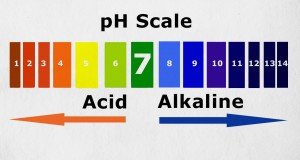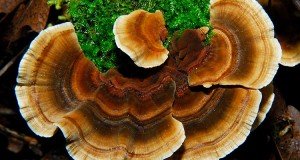Can bee venom heal cancer?
(NaturalHealth365) For thousands of years, scientists and doctors from the Greek Isles to the mainland of China have described the use of bee, scorpion, snake and frog venom for healing. According to some reports, Cuban doctors have even used the venom of scorpions to reduce brain tumors.
Now scientists are infusing venom therapy with the latest technology to offer yet another option for cancer healing, including breast cancer.
The problem with venom therapy is that it works a lot like chemotherapy
You know what happens when you get stung by a bee. Even for those who are not allergic to beestings, it’s just no fun. The sting point swells, turns red, hurts and itches. Sometimes the skin at the source of the sting may peels away. Some insect and animal stings, such as scorpion, cobra and frogs, can be downright deadly.
Yet there is no denying venom’s potency when it comes to healing cancer. Studies have discovered melittin, a peptide found in bee venom, that activates apoptosis (cancer cell death) in lung, renal, liver, prostate, bladder, leukemia and breast cancer cells. Snake venom, especially cobra venom, contains a substance called contortrostatin, which blocks cancer cell migration by binding to certain cancer proteins and scrambling their signals.
The problem, however, is that, like chemo, venom is a poison that will destroy healthy cells as well as cancer cells. As a result, patients using straight venom therapy sometimes run the risk of blood clots, heart muscle damage and nerve damage. This is where the latest research in nanotechnology may be able to help.
Can “nanobees” heal cancer?
Over the last decade, scientists in several universities, including Washington University in St. Louis and the University of Illinois, have discovered ways to use nanotechnology – “ultra-tiny, synthetically manufactured spheres” – to get around venom’s carte-blanch cell-destroying tendencies.
At Washington University, researchers investigating bee venom therapy on mice are using nanotechnology to pinpoint tumor cells for attack by the peptide melittin (discussed earlier). The melittin derivatives, called “nanobees,” hitch a ride on the tiny spherical particles and make a “beeline” straight for the cancer cell, bypassing healthy cells along the way.
At the University of Illinois, a research team discovered a way to synthetically create melittin from honey bees and similar substances found in snakes and scorpions. The aim is to pack injectable nanoparticles so tightly that it will not leach out into the bloodstream when administered. They reported their laboratory findings at the 2014 American Chemical Society conference and have since been planning their next phase of research.
“We have safely used venom toxins in tiny nanometer-sized particles to treat breast cancer and melanoma cells in the laboratory,” head researcher Dipanjan Pan, Ph.D. said in a statement. “These particles, which are camouflaged from the immune system, take the toxin directly to the cancer cells, sparing normal tissue.”
Propolis stops tumor growth without harming healthy cells
Another bee therapy that does not pose the same risks as venom is “proplis.” Propolis is the “caulking” that bees use to plug up holes in their hives. It also has been a natural remedy since ancient times. New research is discovering that it also has the ability to stop cancer tumor growth.
Propolis is an antioxidant and can calm inflammation. It also helps balance the immune system and is a powerful anti-microbial. In addition, it contains caffeic acid phenethyl ester (CAPE), which can confuse the signaling between cancer cells in order to stop cancer cell growth. Some studies have indicated that CAPE may also lead directly to tumor suppression by causing tumors to shrink. Studies on CAPE extracted from propolis have been conducted on prostate, skin, nerve and breast cancer cells.
Cancer healing is just another reason why bees need to be saved
The environmental toxins that are currently affecting our health are also affecting the well- being of honeybee colonies all over the planet. According to 2014-2015 statistics, the state of California, United States, saw a total honeybee colony loss of over 40% during that time.
Bees do more than produce sweet-tasting honey. They are vital to our very survival. Not only do they pollinate the fruits and vegetables that eventually wind up on our dinner table. Recent research indicates that they, as well as other venom-makers, may someday play a significant role in healing cancer, including breast cancer, naturally.
About the author: Dr. Veronique Desaulniers (“Dr. V”) is a best-selling author and specialist in Chiropractic, Bio-Energetics, Meridian Stress Analysis, Homeopathy and Digital Thermography. After 30 years in active practice, she decided to “retire” and devote her time to sharing her personal, non-toxic Breast Cancer healing journey with others. Her years of experience and research have culminated in “The 7 Essentials™ “, a step-by-step coaching program that unravels the mystery of healing the body. Her website and personal healing journey have touched the lives of thousands of women around the globe. To get your F.R.E.E. 7-day mini e-course and to receive her weekly inspiring articles on the power of natural medicine – visit: BreastCancerConqueror.com
References:
https://www.cnn.com/2014/08/12/health/venom-nanotechnology-cancer
https://www.ncbi.nlm.nih.gov/pubmed/22109081
https://jnci.oxfordjournals.org/content/93/4/261.full
https://www.ncbi.nlm.nih.gov/pmc/articles/PMC3627178
https://www.americanscientist.org/science/pub/the-buzz-targeting-cancer-with-bee-venom
https://www.ncbi.nlm.nih.gov/pubmed/19003952
https://www.ncbi.nlm.nih.gov/pubmed/22707327











